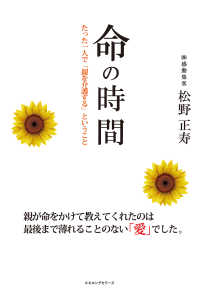Full Description
What does it mean to be accompanied? How can autonomy and a sense of self emerge through one's involvement with others? This book examines the formation of self among the Urarina, an Amazonian people of lowland Peru. Based on detailed ethnography, the analysis highlights the role of intimate but asymmetrical attachments and dependencies which begin in the womb, but can extend beyond human society to include a variety of animals, plants, spirits and material objects. It thereby raises fundamental questions about what it means to be alive, to be an experiencing subject, and to be human. From the highly personalized relationships that develop between babies and their hammocks, to the demonstrations of love and respect between spouses and the power asymmetries that structure encounters between shamans and spirits, hunters and game animals, or owners and pets, what emerges is a strong sense that the lived experience of togetherness lies at the heart of the human condition.
Recognizing this relational quality of existence enables us to see how acting effectively in the world may be less a matter of individual self-assertion than learning how to elicit empathetic acts of care and attentiveness by endearing oneself to others.
Contents
List of Illustrations Acknowledgments Prologue: Learning to Stand-Leaned-Together 1. Spaces of Refuge 2. Vital Shields 3. Conceiving the Conjugal Body 4. Mutuality and Autonomy 5. Authority and Solidarity 6. Mastering Subjection Epilogue: An Accompanied Life Notes Bibliography Index
-

- 電子書籍
- 世界一の大富豪はまだ愛を知らない ハー…
-

- 電子書籍
- 鋼構造学(改訂版) 土木・環境系コアテ…
-

- 電子書籍
- 命の時間 たった一人で「親を介護する」…
-

- 電子書籍
- 【単話売】少年王と恋の刻印 2話 ネク…
-

- 電子書籍
- 鬼切丸伝 (12)【電子版特典付】 S…



